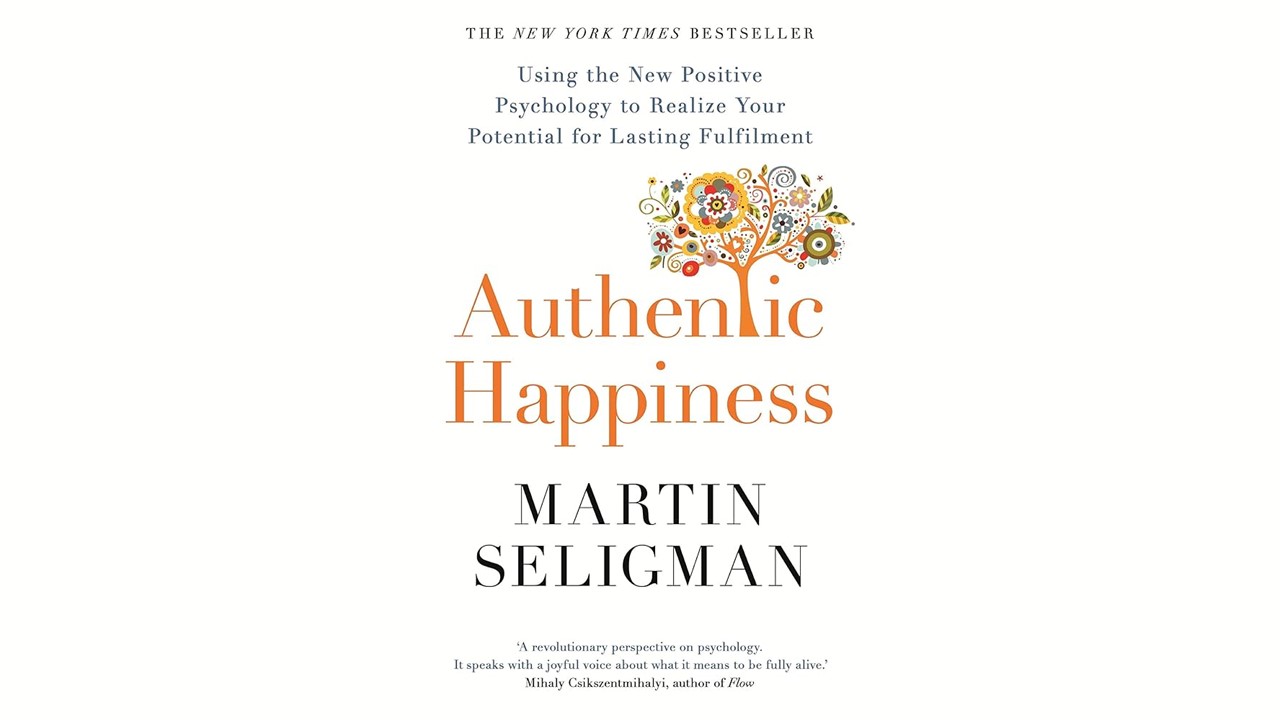“Authentic Happiness (Reissue)” is a book by Martin E.P. Seligman that explores the science of positive psychology and how individuals can cultivate authentic happiness and well-being.
a. Introduction to Positive Psychology: Seligman introduces the field of positive psychology, which focuses on the study of human strengths, well- being, and happiness, rather than solely on pathology and mental illness.
b. The Three Kinds of Happiness: The book presents the idea that there are three types of happiness: the Pleasant Life (enjoying daily pleasures), the Good Life (engaging in activities that align with one’s strengths and values), and the Meaningful Life (serving something larger than oneself).
c. The Role of Positive Emotions: Seligman discusses the importance of positive emotions, such as joy, gratitude, and love, in contributing to overall well-being and happiness.
d. Strengths and Virtues: The book explores the concept of character strengths and virtues and how individuals can identify and cultivate these qualities to enhance their lives.
e. The PERMA Model: Seligman introduces the PERMA model, which consists of five elements of well-being: Positive Emotion, Engagement, Relationships, Meaning, and Accomplishment. These elements are seen as key to authentic happiness.
f. Mindfulness and Flow: The book discusses the states of mindfulness and flow, in which individuals are fully engaged and present in their activities, leading to a sense of well-being and happiness.
g. Mindfulness and Flow: The book discusses the states of mindfulness and flow, in which individuals are fully engaged and present in their activities, leading to a sense of well-being and happiness.
h. Positive Relationships: Seligman emphasizes the importance of positive relationships and social connections in promoting happiness. Healthy, supportive relationships are a crucial element of well-being.
i. The Role of Meaning: Meaning and purpose in life are explored as significant contributors to authentic happiness. Seligman discusses the value of serving something larger than oneself.
j. Gratitude and Positive Thinking: The book suggests that practicing gratitude and positive thinking can lead to greater happiness and well-being.
k. Measuring Happiness: Seligman introduces various tools and assessments for measuring happiness and well-being, including the Authentic Happiness Inventory.
l. Strengths-Based Approach: The book encourages readers to adopt a strengths-based approach to life, focusing on their unique talents and qualities rather than dwelling on weaknesses.
m. Cultivating Positive Habits: Seligman offers practical advice on developing positive habits and rituals that can enhance well-being, such as keeping a gratitude journal or practicing acts of kindness.
n. Resilience and Optimism: The book explores the concept of resilience and how individuals can develop a more optimistic mindset to cope with life’s
challenges.
o. The Role of Positive Psychology in Education and Therapy: Seligman discusses how positive psychology can be applied in education and therapy to promote well-being and personal growth.
“Authentic Happiness” concludes by reinforcing the idea that individuals have the power to cultivate authentic happiness through a combination of positive emotions, engagement, positive relationships, meaning, and accomplishment. Martin E.P. Seligman’s “Authentic Happiness” offers readers a comprehensive exploration of the science of positive psychology and provides practical insights and exercises to help individuals enhance their well-being and experience authentic happiness in their lives.




